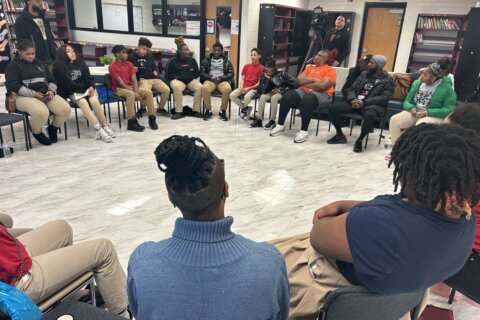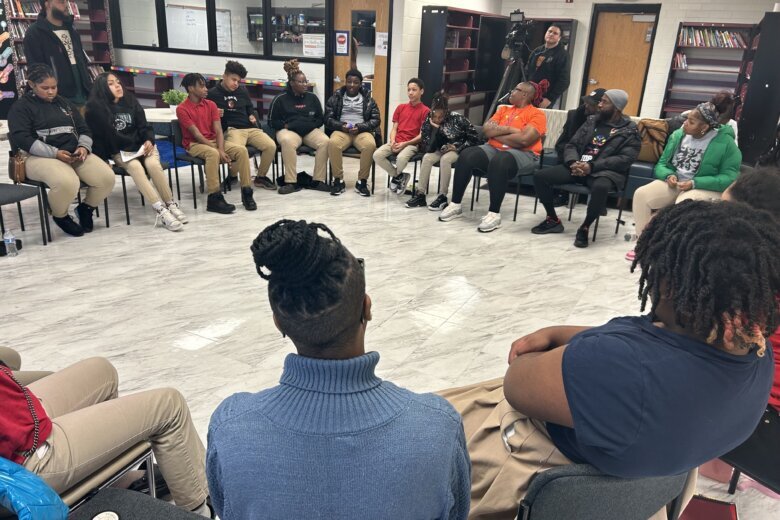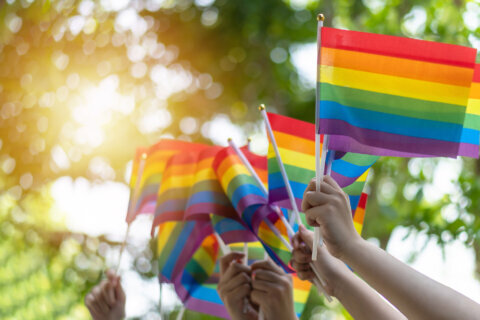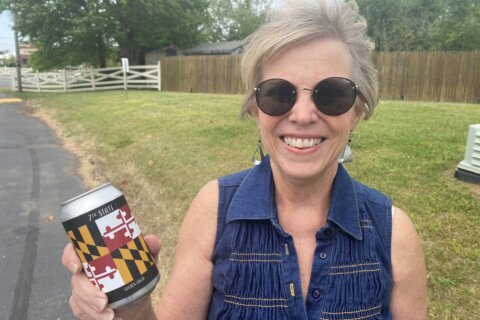
Sitting in a circle in the school’s media center Monday afternoon, some 20 students at Benjamin Stoddert Middle School in Prince George’s County, Maryland, considered ways to prevent and respond to violent acts in the community.
Euniesha Davis, director of the county’s office of community relations, watched as almost every student raised their hand when asked if they have been a victim of or seen violence in the community. She listened as students explained that some of their peers don’t have role models to talk to at home, don’t know how to deal with their anger, or aren’t comfortable explaining how they feel.
As a result, the students said, some act out, sometimes in violent ways.
Davis and several members of the county’s Hope in Action team stopped by the school as part of The Hope in Action Anti-Gun Violence Project. County Executive Angela Alsobrooks launched the campaign in 2021, as a way to give young people the chance to collaborate with local government and community leaders to address violence.
After a meeting at Charles Herbert Flowers High School last month, Alsobrooks and State’s Attorney Aisha Braveboy said some students told them they didn’t have an adult who listened to them at home. Some students pointed out similar observations Monday.
Jessica, an eighth-grader, explained she has a connection with her mom that other students may not have with a parent.
“I don’t get how they feel because I’ve had someone to talk to,” Jessica said. “It’s helped me a lot. I feel my mental health is better. I see how a lot of people that I grew (up with) would talk to my mom, and their results have been better.”
Jadyn, a seventh-grader, said there’s a notable amount of violence in the community. In some cases, “a lot of people hitting people for sometimes no reason at all. People are quick to get mad.”
“Sometimes I don’t feel safe when I’m going (to) certain places,” he said.
He also attributed some of the violence to things such as music lyrics.
Raziyah, meanwhile, encouraged county leaders to expand the dialogue beyond the small group that gathered in the library Monday. She told Davis that there needs to be a cafeteria or gym filled with students venting and talking about their feelings.
She said there are steps students can take, such as getting to know each other, and offering help with things like homework or sports practice. When something violent happens in the community, she said students do discuss it.
“What if one day it’s us?” Raziyah asked. “It’s a ‘What if’ question. We don’t know what’s going to happen today or tomorrow, maybe tonight. … We just have to second-guess everything, like our safety.”
Principal Tisa Morgan characterized Monday’s conversation as eye-opening. The school, she said, has mental health clinicians, peer mediators and student advocates, but there’s more to be done.
Morgan said some student struggle with being home alone because their parents are working. In some cases, older students raise their younger siblings.
Food insecurity and violence are also top of mind for kids, she said. Some students tell her it’s scary to go outside at night.
“We have to get a hold on this violence that the youth is perpetuating,” Morgan said. “Things that they’re arguing about, things that they’re doing in the community, and it spills over into the school.”
Jessica said she has a significant amount of fear because of the ongoing violence.
“I’ve got to walk outside with a lot of people just to be safe and not feel someone’s after me,” she said.









